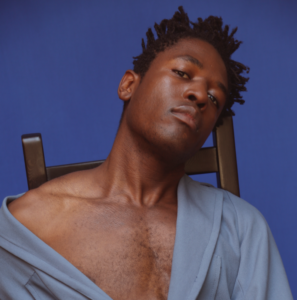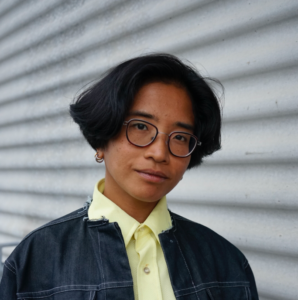The Truths
Behind Our Fragmented
Realities
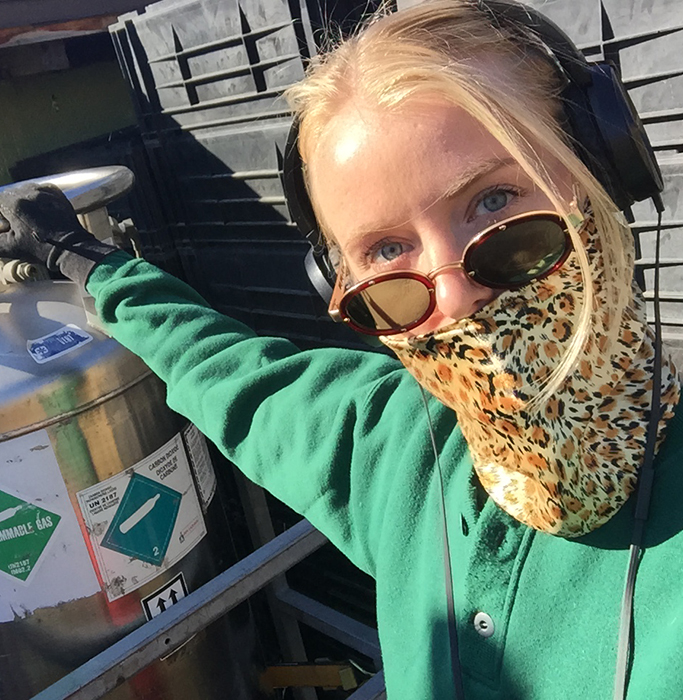
Date
Wednesday, September 9th, 2020
Emplacement
Ashcroft, Canada
Author
Julia Kidder
Éditrice
Maéva Carreira
Éditrice en chef
Tamy Emma Pepin
“I hold the very simpleminded view that everything is related to everything else-and that everyone is related to everyone else, and that every species is related to every other. The only way out of this tissue of interrelations, it seems to me, is to stop paying attention, and to substitute something else-hallucination, greed, pride, or hatred, for example-for sensuous connection to the facts. I think it is not the world’s task to entertain us, but ours to take an interest in the world.”
– Robert Bringhurst
You’re walking down an arid corridor with sage brush flanking your sides. Dust kicked up. Crickets whistle-chattering. The grasshoppers clack their winged bodies in short dry grass. Honey bees, hornets and wasps congregate in fever on a sun-beaten pear. Some train cars are more audible than others. Where two rivers meet, in the middle of the desert – my bustling world exists. Like a new metronome. The coyotes and the ravens laugh.
I make sure to tell people that my decision to move to our small family farm in Ashcroft happened before Covid – as if that in some way legitimizes the decision, letting people know that I didn’t flee the city to a privileged retreat, although in effect – that’s what I was able to do. Initially, the plan had been to come and try our hand at farming. It has become something else completely. We brought our dog and re-adopted my late mother’s old horse, Jack, and spent the season experimenting with the land and now we’re planning ways to share it – so that it can benefit more people than just us, a land co-op, rest stop, a place to connect with nature, and an offering of rest or renewal. Since this moment in time requires us to ricochet seamlessly between states of being, I know that I am not alone in seeking synergy now more than ever.
FRAGMENTED REALITIES
There are floods, but there is sunshine. The cherry blossoms were so beautiful and the pollinators swarmed in spring. The climate crisis could displace over 1.2 billion people by 2050. Tahlequah, the Southern Resident Killer Whale just had a calf off the BC coast. Ruth Bader Ginsberg just died. The latest report on biodiversity says animal populations are being pushed to the edge. Over 1 million creatures now face extinction. Australia is on fire. No, the Amazon is on fire. California. Oregon. Our backyard. The last ice shelf in the Canadian arctic has collapsed and my heart cracked as it fell into the sea. It’s as if there are almost too many opposing realities to consider that a single reality exists at all.
Now, I know very little – in fact, almost nothing at all – about quantum mechanics. But according to a theory called Wigners Friend – it has been suggested there is no such thing as objective reality, and something in that theoretical frame appeals to me. Moving beyond considerations of a felt state of cognitive dissonance, this theory describes how two hypothetical scientists observe one particle of light existing in two states. The “superposition” of this particle means that the photon’s polarisation (or the axis upon which it spins) is both vertical and horizontal at the same time. “However, once one scientist in an isolated laboratory measures the photon, they find the photon’s polarisation is fixed at either vertical, or horizontal. At the same time, for someone who is outside the laboratory and is not aware of the result, that unmeasured photon is still in a state of superposition.”
So, would it appear that these two different/conflicting realities are both true?
It’s as if there are almost too many opposing realities to consider that a single reality exists at all.
On reflection, I see that moving here has been a kind of experiment in psychological tinkering, and in navigating duality. At one moment I’m the observer of my own experience – watching myself work at my desk, seeing my fingers tap the keys, a woman who still feels like a child, ticking off boxes, crossing off events in three different pictorial calendars, logging in and out of Zoom meetings.
Existing in both the digital and physical realms touches all of us now. I notice it most in retraining my mind to learn across screens while a nagging urgency tugs at me to be practical and tie up loose ends: The pumps. The horses feet, the fruit, the fence posts. I’m constantly flipping between states of elation and worry – about water, waste and scarcity. I check my phone for nothing, longing for another time when there wasn’t some prerequisite for digital dexterity or a need for code generators followed by failed login attempts.
I know I’m not alone in this tangled exercise. Managing personal, political and cultural tensions while finding the right plugins and platforms is moving in collective ebb and flow. It’s just that doing so online comes with its own baggage: the sleepless nights, the self-monitoring, the desperation of messaging. Feeling the weight of living along with the weightlessness of existing in a metaphysical realm is like swimming upstream between states of mind. It’s a search for truth in the often murky waters of fragmented and opposing realities. On the one hand, we see infinite colour, prismic joy, trees, estuaries, and healthy thriving societies. On the other hand, the other reality, more painful – but just as true – holds a vision of red, fire skies – small minds, brutality and anguish. It hurts to look at suffering, competition and narcissism.
In a moment of global awakening to issues of police violence and systemic racism, that means facing the facts about what some communities have been facing since the inception of this young country.
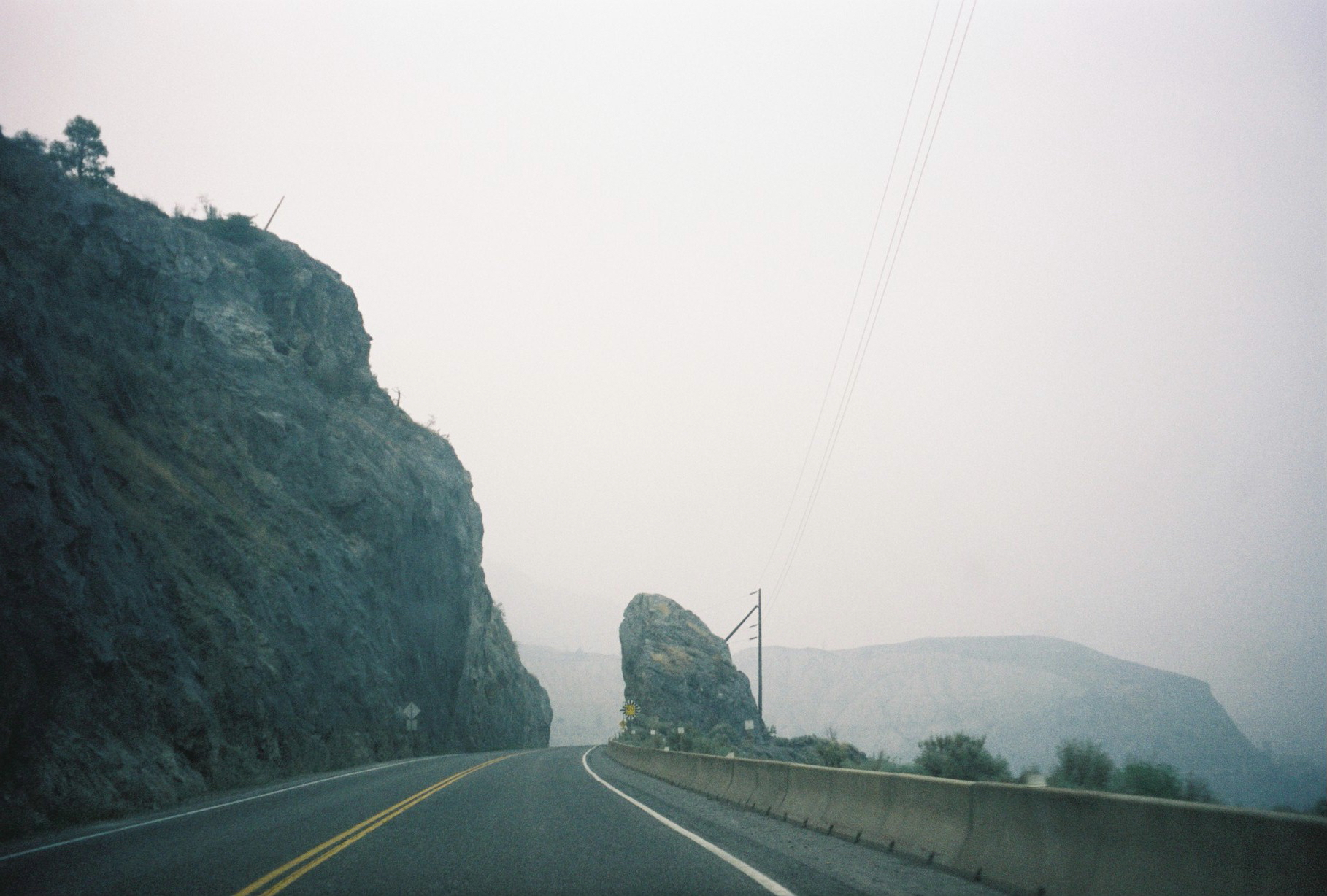
Some of the facts
I.
The biosphere does not accept that borders between nations are real;
II.
Black people in the United States of America can be shot in their beds, while they sleep;
III.
Police forces were founded either as slave patrols, or to monitor the free movement of Indigenous people;
IV.
The carceral justice system profits off of slave labour;
V.
Colonial extractionist systems have legitimized a disproportionate level of structural violence against women, trans and two – spirited people – and the earth;
VI.
Globalization came with gains and losses;
VII.
My white skin has afforded me less violence, less risk, less insecurity;
VIII.
Current economies are not compatible with the accelerating interconnected crisis of global pandemics, climate change and food commodity chains.
ASYMMETRICAL STRUGGLES
The Bonaparte River runs through our backyard on salmon spawning grounds and a vital fishing area. Despite my grandparents living here first, I’m at odds with my own access to such a significant place. Living on unceded land between the shared boundary of Nlakapamux and Secwepemcterritories is complicated for many reasons, but mostly the obvious : I live in a place on land that was stolen, in a part of the world where Indigenous people are systematically criminalized for resisting industrial protect themselves from harm.
Since Canada was founded, the relationship between the Crown and Indigenous communities has been tense and fragile because of that pattern of deceit. Our current structures stem from repeated violations of trust. Both through the violent imposition of settler-state apparatus’ like the RCMP, and a trickle-down of white denial perpetuated in deeds to ‘Crown land’ held by people like myself.
The ambitious and multi-layered project of total “systems overhaul” is an ever-changing process of re-imagining, discovery and learning. In its more advanced stages it can help us to picture our place in circular economic models, in decolonized relationships and living within healthy systems.
My mentors have explained to me how insipid tentacles of coercion and domination have braided themselves into our legal systems, our political identities and ultimately; into the fallacy of Canadian statehood.
Some ‘Canadians’ are coming to terms with the legacy of this delusion, asking questions about what their identity means when it has been absorbed through a tireless fabrication of a romanticized, one-sided version of history.
Did you learn about the assimilation of Indigenous peoples, of residential schools and the 60’s scoop in high school? Did you learn about forced sterilization programs and the outlawing of traditional governance mechanisms? Did we learn, ever – that displacement is ongoing and that the Indian Act is a tool of subordination and blackmail? Or did schoolchildren ever learn about the fact that when treaties were signed and then broken that made them illegitimate – that we’re effectively living on stolen land? Did you know that Indigenous laws have always been more sophisticated than colonial ones?
When we fell for white concepts of ‘wilderness’, we left people out of our visions for conservation. When wild nature could only be imagined as some pristine place, un-interfered with, we failed to see the beauty of reciprocity in 10,000-year-old Indigenous stewardship methodologies that are now becoming widely understood as the planet’s best hope for survival, and our ticket out of the paternalistic relationships inherent to settler-colonial capitalism and racist environmentalism.
It’s a crushing feeling that the place we call home and the ways that we thought we should care for it were wrong. It leaves an acrid flavor in my mouth – just as the air sours with the smoke reaching Ashcroft from wildfires in Washington State.
The illusion of the good and dignified Canadian is now so polluted that it can’t be differentiated from the proverbial waste it produces in practice. But, how to undo the threads of such an abusive relationship? And now? During a pandemic.
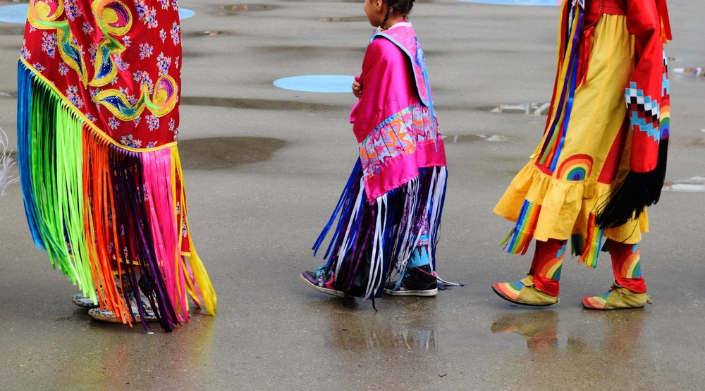
2020 – NEW TRADITIONS
Now, I know ‘Land Back’ are words that can seem very scary to white settlers and landowners. But, when concepts of private property, “owned” by settlers like my own family on ‘Crown Land’ face the towering legitimacy of millennia-old legal structures, it’s obvious that Indigenous people are owed far more than an apology for the ongoing denial of the ability to govern their own territories.
On the topic of shared histories, I learn each day about the racist underpinnings of the environmental movement that I’m embedded in. I say this with a profound respect for ecosystems scientists and conservationists, because I know that we are all bearing witness to these change-it-all moments. I know that this comes with a shared and collective grief. As inhabitants of this planet, we are in mourning. That is why understanding property as an extension of the Crown’s own illusions of grandeur is a first step in imagining a different future, and a way to negotiate truths about who we are. Here in Canada, we need to be asking ourselves how property owners can, in practical terms – share land and its benefits with others. Thinking of entitlements to deeds, and private property is not abstract or separate from the act of living in the place itself. If I can grow a potato, I can just as easily grow two and share one with someone else.
INVESTIGATION IS FREE
Does your vision pendulum like mine? Moving between totally obscured – to hazy – to crystal clear?
When I really move towards myself, it makes me cry. I cry deep tears for the planet and the loss and the insurmountable pain that I’ve never known as my own. I hold my head in my hands and get angry, propelled and wordy. I write emails, I sign petitions, I read critical analysis with a furrowed brow. I yell and I rant and I swear and I’m mad. Then, in some of the time-space that exists between a fluctuation of moods – I look up and see my mother in the Osprey flying straight above the earth. In my tears and my rage, I inhale deeply and my body flushes pins of needles. From the crown of my head to beneath the earth that I’m standing on, I make the connection with my own agency. Like a reflex of the knee.
I can do this. I can make change. I am strong. I can be the battery. I could be the propeller. I could just be totally silent. I can use this place to encourage, foster and share the very best ideas available, to build the support beams for an exquisite future and away from systems that require us to be in competition. Our humanity shines when we cooperate, when we care for one another.
To engage in creating a world for the better means creating a road map. And from where I’m standing, I know that if I pursue the right type of investigation, ask the right questions, align myself with those who have been doing this work and advocate for them, help to develop creative, collaborative solutions to the problems we face we can mend some parts of our currently-sinking earthship. Where we go from here relies on the degree to which we can see ourselves as inventors of the future.
The exercise of imagining, and reflecting on transformation then becomes more profound than being strapped to the idea that this is all there is. Nothing is locked-in right now. It’s all up for discussion. It’s all susceptible to change.
Just like the physicist observing the particle that did move on its axis, I turn to the reality that is more hopeful than its alternative. That hope brings me somewhere less fragmented and more flexible so that I feel we can move like ninjas in times of war. That hope makes us strong and makes the bridges between our movements more elastic, more fibrous – so that we don’t bend or break when dark times like these are upon us. The exercise of imagining, and reflecting on transformation then becomes more profound than being strapped to the idea that this is all there is. Nothing is locked-in right now. It’s all up for discussion. It’s all susceptible to change.
“Hope is essential to any political struggle for radical change when the overall social climate promotes disillusionment and despair.”
– bell hooks, Teaching Community : A Pedagogy of Hope
In Blessed Unrest, Paul Hawken refers to the vast network of people working for Indigenous, environmental and human rights as a social immune-response to the pathogens of racism, disaster capitalism and ecocide. We are a mutual symbiotic association – like fungal networks, like mycorrhiza. We work together, under the surface and from the ground up in different ways to ‘make change’. Ours is the language of love, and biomimicry, of food and music – spoken in ecology and philosophy all across our networks when we organize and build change for renewal. When you add up the different functions of our accumulated strengths, we shine.
And just like one set of projections are my own onto the world, the other set of projections are those of the world onto me. Right now, I’m just in a chair in a room in Ashcroft, typing. But as I look away from the screen, outside to the fruit trees as they sputter apples and pears. I stand up to initiate some physical pragmatism, to face the bug bites, instruction manuals and irrigation lines that I need to learn about in order to shape part of the role I might play in the future. Reflexivity in perpetuity. I may be by myself but I know I’m not alone in confronting the lie we’ve been told so long : that there’s no use in trying.
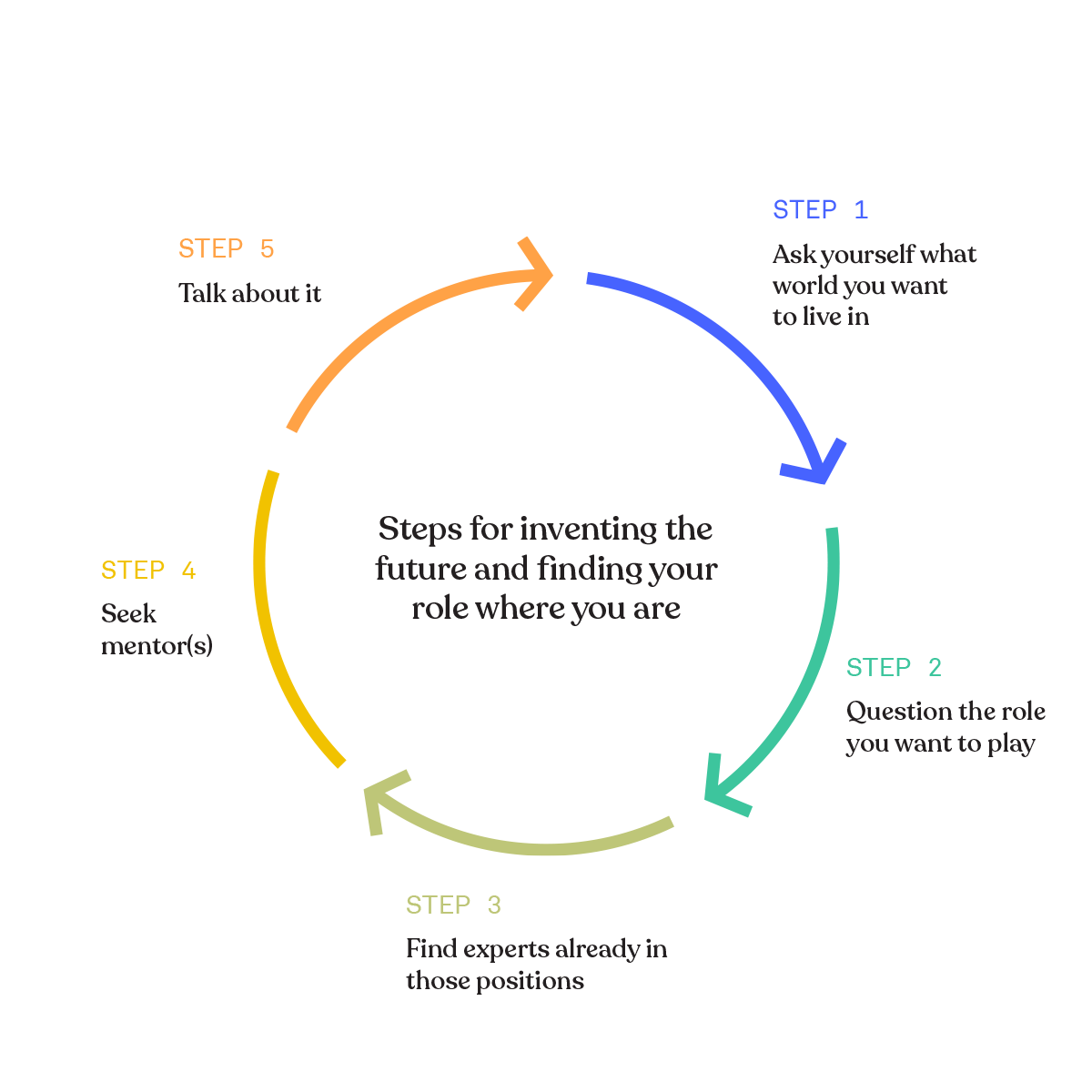
Step 1
I plan backwards from perfect – What do you want the world to look like? How is it made up, who is in control? What kinds of plants or animals do you see in this world? What kinds of technologies do we use? Find your self somewhere in this perfect world you have created and begin planning backwards from there.
Step 2
If you found yourself imagining some combined role for your future-self in this future world – what do your roles encompass? How much time do you spend with your friends and family? How do you seek joy? When do you rest? Do you grow and foster systems that benefit others?
Step 3
I try to find out who the experts are of my imagined role. I read them. I find their contact information and I try to get in touch. As it turns out, we may very well be able to reach out to someone who is doing exactly what we think only exists in this perfect future world – and they are doing it right now.
Step 4
I listen to the people wiser than me, meaning most people. I find mentors. We can hold space and share conations with elders we must ask them everything. Investigation is free.
*Bear in mind that growing into adulthood during peak consumer capitalism may have instilled a sense of competition in you, or more invisibly – the need to feel unique. It’s ok to do something that somebody else already does. Do not be discouraged that you will not be coming up with a brand new idea – instead find out what play in order to empower those who have the tools and the knowledge that you see as having value, connect them with others, share their ideas. Apply that knowledge to challenges.
Step 5
Invite your friends, your family and your loved ones to have conversations where they share what their perfect futures look like – you disagree with, find out what divided you, see where you can find common ground. Decolonize your mind. Declutter your social life. Take a break from social media, go for a walk alone, and think about getting to this step, and think about every thing you have learned.
Julia Kidder
@Julia Kidder
WWW.

